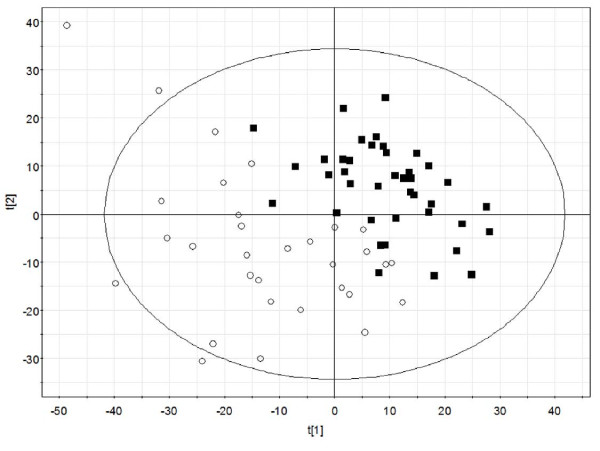Figure 3.
UPLC-MS analysis allows distinction of samples from conspecific and heterospecific stands. Samples were processed and analyzed as described in Materials and Methods. The resulting dataset was analyzed by principle component analysis followed by projection to latent structures - discriminant analysis (PLS-DA). The resulting plot demonstrates that individuals from conspecific and heterospecific stands can be distinguished. Open circles indicate samples from heterospecifc stands and filled squares indicate samples from conspecific stands. The x- and y-axes (t[1] and t[2]) represent the first and second PLS components, respectively. Ellipse represents the 95% confidence interval. Randomization of the relative density variable (conspecific versus heterospecifc stands) eliminated predictive power of the PLS-DA model.

